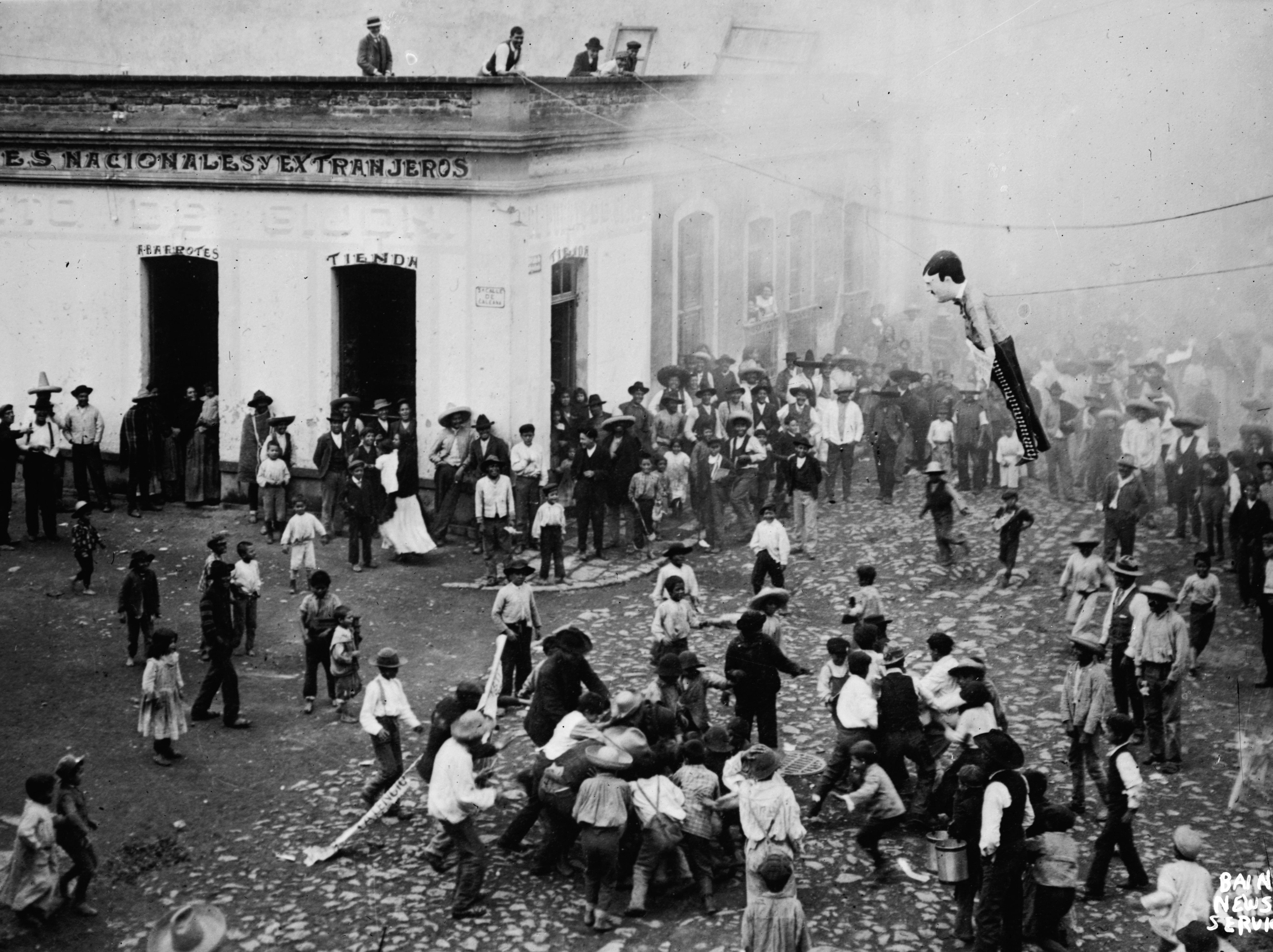|
Colonia Peralvillo
Colonia Peralvillo is a colonia located in the Cuauhtémoc borough of Mexico City, just northwest of the city's historic center. It has been a poor area since colonial times, but the modern colonia was not established until the late 19th and early 20th centuries. Although the area has been the setting for a number of literary works and films, today the area is known for violence and crime, especially shootings and the selling of stolen auto parts. Description The boundaries of the colonia are formed by the following streets: Juventino Rosas to the south, Avenida Río Consulado to the north, Calzada de Guadalupe to the east and Avenida Insurgentes Norte to the west. It has been a poor area since early colonial times. Many of the streets here are named for Mexican and international musicians, a change which was done early in the colonia's history to unify it. However, there are exceptions where the names are simply numbers or others such as Avenida Ferrocarril de Cintura. There ar ... [...More Info...] [...Related Items...] OR: [Wikipedia] [Google] [Baidu] |
List Of Neighborhoods In Mexico City
In Mexico, the neighborhoods of large metropolitan areas are known as colonias. One theory suggests that the name, which literally means colony, arose in the late 19th and early 20th centuries, when one of the first urban developments outside Mexico City's core was built by a French immigrant colony. Unlike neighborhoods in the United States, ''colonias'' in Mexico City have a specific name which is used in all official documents and postal addresses. Usually, ''colonias'' are assigned a specific postal code; nonetheless, in recent urban developments, gated communities are also defined as ''colonias'', yet they share the postal code with adjacent neighborhoods. When writing a postal address the name of the ''colonia'' must be specified followed by the postal code and preceding the name of the city. For example: ::''Calle Dakota 145'' ::''Colonia Nápoles '' ::''Alc. Benito Juárez '' ::''03810 Ciudad de México '' Some of the better known ''colonias'' include: * Bosques de las ... [...More Info...] [...Related Items...] OR: [Wikipedia] [Google] [Baidu] |
Tlatelolco (Mexico City)
Tlatelolco ( nci-IPA, Tlatelōlco, tɬateˈloːɬko, or ', from ''tlalli'' - land; ''telolli'' - hill; ''co'' - place; ) is an area now within the Cuauhtémoc borough of Mexico City, centered on the Plaza de las Tres Culturas (Square of Three Cultures). Its archeological history extends to remains from the 15th and 16th centuries, as well as more recent colonial structures. The square is bounded by an excavated Aztec archaeological site, the 16th century college church designed by Fray Juan de Torquemada and dedicated to St James the Great (known as Colegio de Santa Cruz de Tlatelolco), the remains of a former Franciscan convent to which was formerly attached the Colegio de Santa Cruz de Tlatelolco, and an office complex that was used by the Ministry of Foreign Relations and is now the property of the National Autonomous University of Mexico. History of modern Tlatelolco The Nonoalco-Tlatelolco housing project, built in the 1960s, is served by Metro Tlatelolco. The comple ... [...More Info...] [...Related Items...] OR: [Wikipedia] [Google] [Baidu] |
Burning Of Judas
The burning of Judas is an Easter-time ritual that originated in European Christian communities where an effigy of Judas Iscariot is burned. Other related mistreatment of Judas effigies include hanging, flogging, and exploding with fireworks. A similar ritual in Jewish tradition would be the hanging and burning an effigy of Haman and his ten sons during Purim, although this is not a widespread contemporary practice. Though not an official part of the Easter liturgical cycle, the custom is typically a part of the reenactment of the story of the Passion that is practiced by the faithful during Easter. Customs vary, but the effigy of Judas is typically hanged (reenacting ) on Good Friday, then burned on the night of Easter Sunday. In many parts of Latin America this practice occurs on the eve of the New Year as a symbol of ridding one's self of evil and beginning a new year in spiritual purity. Some communities observe this ritual using various effigies, including the biblical Jud ... [...More Info...] [...Related Items...] OR: [Wikipedia] [Google] [Baidu] |
Francisco Labastida
Francisco Labastida Ochoa (; born 14 August 1942) is a Mexican economist and politician affiliated with the Institutional Revolutionary Party (PRI), who became the first presidential candidate of his party to lose a presidential election, which he did in the 2000 presidential election to Vicente Fox. Labastida was born to Gloria Ochoa de Labastida and Eduardo Labastida Kofahl. His wife, Teresa Uriarte, was director of UNAM's Institute of Aesthetics Research. His great-grandfather fought on the side of Mexican President Benito Juárez in the War of Reform, and his grandfather was Governor of Sinaloa as well as federal deputy. Labastida served as governor of Sinaloa (1987–1992), defeating Manuel Clouthier of the National Action Party. During and after his tenure as governor, Labastida was accused of protecting Sinaloan drug traffickers and overlooking their activities. Labastida was Secretary of Energy during the administration of Miguel de la Madrid. He was also Secreta ... [...More Info...] [...Related Items...] OR: [Wikipedia] [Google] [Baidu] |
Cuauhtémoc Cárdenas
Cuauhtémoc Cárdenas Solórzano (; born 1 May 1934) is a Mexican prominent politician. The son of 51st President of Mexico Lázaro Cárdenas, he is a former Head of Government of Mexico City and a founder of the Party of the Democratic Revolution. He ran for the presidency of Mexico three times, and his 1988 loss to the Institutional Revolutionary Party candidate Carlos Salinas de Gortari had long been considered a direct result of obvious electoral fraud perpetrated by the ruling PRI, later acknowledged by President Miguel de la Madrid. He previously served as a Senator, having been elected in 1976 to represent the state of Michoacán and also as the Governor of Michoacán from 1980 to 1986. Early life and career Cárdenas Solórzano was born in Mexico City on 1 May 1934 and was named after the last Aztec emperor, Cuauhtémoc. He is the only son of Lázaro Cárdenas and Amalia Solórzano. When he was seven months old, his father was inaugurated as President of Mexico. He stu ... [...More Info...] [...Related Items...] OR: [Wikipedia] [Google] [Baidu] |
Vicente Fox
Vicente Fox Quesada (; born 2 July 1942) is a Mexican businessman and politician who served as the 62nd president of Mexico from 1 December 2000 to 30 November 2006. After campaigning as a Right-wing populism, right-wing populist, Fox was elected president on the National Action Party (Mexico), National Action Party (PAN) ticket in the 2000 Mexican general election, 2000 election. He became the first president not from the Institutional Revolutionary Party (PRI) since 1929, and the first elected from an opposition party since Francisco I. Madero in 1911. Fox won the election with 42 percent of the vote. As president, he continued the Neoliberalism, neoliberal economic policies that his predecessors from the PRI had adopted since the 1980s. The first half of his administration saw a further shift of the federal government to the right, strong relations with the United States and George W. Bush, unsuccessful attempts to introduce a value-added tax to medicines and to build an air ... [...More Info...] [...Related Items...] OR: [Wikipedia] [Google] [Baidu] |
2000 Mexican General Election
General elections were held in Mexico on Sunday, 2 July 2000. Voters went to the polls to elect a new president to serve a single six-year term, replacing President Ernesto Zedillo Ponce de León, who was ineligible for re-election under the 1917 Constitution. The election system ran under plurality voting; 500 members of the Chamber of Deputies (300 by the first-past-the-post system and 200 by proportional representation) for a three-year term and 128 members of the Senate (three per state by first-past-the-post (two first-past-the-post seats are allocated to the party with the largest share of the vote, and the remaining seat is given to the first runner-up) and 32 by proportional representation from national party lists) for six-year terms. The presidential election was won by Vicente Fox of the Alliance for Change, who received 43.4% of the vote, Dieter Nohlen (2005) ''Elections in the Americas: A data handbook, Volume I'', p475 the first time the opposition had won an ... [...More Info...] [...Related Items...] OR: [Wikipedia] [Google] [Baidu] |
Effigy
An effigy is an often life-size sculptural representation of a specific person, or a prototypical figure. The term is mostly used for the makeshift dummies used for symbolic punishment in political protests and for the figures burned in certain traditions around New Year, Carnival and Easter. In European cultures, effigies were in the past also used for punishment in formal justice, when the perpetrator could not be apprehended, and in popular justice practices of social shaming and exclusion. Additionally, "effigy" is used for certain traditional forms of sculpture, namely tomb effigies, funeral effigies and coin effigies. There is a large overlap and exchange between the ephemeral forms of effigies. Traditional holiday effigies are often politically charged, for instance, when the generalised figures Año Viejo (the Old Year) or Burning of Judas, Judas in Latin America are substituted by the effigy of a despised politician. Traditional forms are also borrowed for political p ... [...More Info...] [...Related Items...] OR: [Wikipedia] [Google] [Baidu] |
Ariel Awards
The Ariel Award ( es, Premio Ariel) is an award that recognizes the best of Mexican cinema. Given annually, since 1946, by the Mexican Academy of Cinematographic Arts and Sciences (AMACC), the award recognizes artistical and technical excellence in the Mexican film industry. The purpose of the Ariel recognition is to stimulate and increase the excellence of Mexican cinema, favor the growth of the industry, and promote the meeting and strengthening of the national film community. It is regarded as the most prestigious award in the Mexican film industry and considered Mexico's equivalent to the Oscars of the United States. History The statuette is in the image of a man and it was designed by the sculptor Ignacio Asúnsolo. The original statuette is currently found inside Churubusco Studios in Mexico City. The name "Ariel" was inspired by a series of short writings called '' El Ariel'' by Uruguayan writer José Enrique Rodó that inspired generations of young Latin America ... [...More Info...] [...Related Items...] OR: [Wikipedia] [Google] [Baidu] |
José Martínez De La Vega
José is a predominantly Spanish and Portuguese form of the given name Joseph. While spelled alike, this name is pronounced differently in each language: Spanish ; Portuguese (or ). In French, the name ''José'', pronounced , is an old vernacular form of Joseph, which is also in current usage as a given name. José is also commonly used as part of masculine name composites, such as José Manuel, José Maria or Antonio José, and also in female name composites like Maria José or Marie-José. The feminine written form is ''Josée'' as in French. In Netherlandic Dutch, however, ''José'' is a feminine given name and is pronounced ; it may occur as part of name composites like Marie-José or as a feminine first name in its own right; it can also be short for the name ''Josina'' and even a Dutch hypocorism of the name ''Johanna''. In England, Jose is originally a Romano-Celtic surname, and people with this family name can usually be found in, or traced to, the English county of ... [...More Info...] [...Related Items...] OR: [Wikipedia] [Google] [Baidu] |




